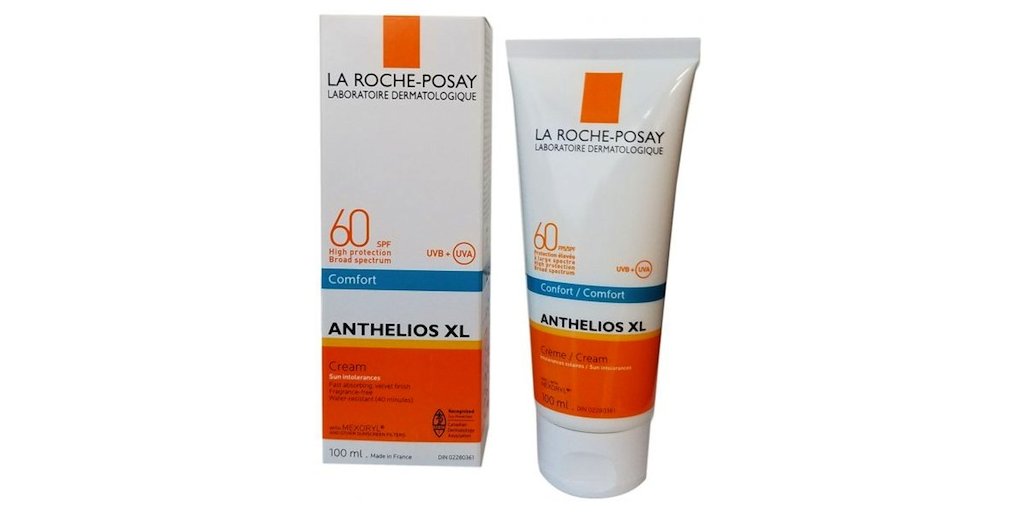MEXORYL

What is Mexoryl?
Mexoryl™ SX (also known as Ecamsule) is made by L’Oreal with the French company La Roche-Posay, and according to their website it is “the most effective FDA-approved organic filter designed to protect against short UVA rays (maximum absorption at 344nm) with high photostability, a key factor in sunscreen protection efficacy.” (1) Photostability means the sunscreen will maintain UVA protection longer and not degrade on exposure to sunlight.
Mexoryl™ SX is a benzylidene camphor derivative, and part of a patented stabilization system for Avobenzone, which is known to block UVA rays. (2) Mexoryl™ SX acts as a normal filter for sunlight, but becomes highly energized by absorbing the energy of a UV photon and then “deactivates and releases the absorbed energy to the environment as harmless energy”. (2)
ANTHELIOS SX contains the ingredient Mexoryl™ SX, and has a SPF 15 (Sun Protection Factor, which measures the UVB protection level) and a PFA 15 (Protection Factor UVA, which measures the UVA protection level). (1)
UVA vs UVB Radiation from Sunlight
UVB radiation has shorter wavelengths and is higher energy than UVA. UVB is the major factor in producing acute detrimental effects such as sunburn, and causes mutation of DNA to create pyrimidine dimers and often mutation of an important tumor suppressor gene, p53. (2) Thus, UVB radiation plays a role in the formation of skin cancer.
UVA rays are lower in energy but more numerous than UVB rays and persist all day long when the sun is out. UVA rays penetrate deeper through the skin and have a major contribution in dermal damage. (2) However, unlike sunburn visible damaging effects of UVA radiation only appear after years of exposure and evidence suggests that they are responsible for much of the early signs of photoaging. (2) UVA radiation may affect elastin fibers and collagen bundles, causing loss of skin firmness and tone and increase appearance of fine lines and wrinkles. (2)
The UVB range is 280 to 320 nanometers, and the UVA range is 320 to 400. Mexoryl protects against UV wavelengths in the 290–400 nanometer range, with peak protection at 345 nm. (3)
Research on Mexoryl
According to L’Oréal Research laboratories, researchers have demonstrated that in vitro reconstructed skin is a powerful tool to assess the effects of UV radiation and evaluate UVA and UVB damage. There is no official rating for UVA protection in the US; however, Europe has several different rating systems that are used to measure effectiveness in blocking UVA rays. The two most common are the IPD (immediate pigment darkening assay) and the PPD (persistent pigment darkening assay).
Formulations containing Mexoryl™ SX and L’Oreal’s patented photostable association of Octocrylene and Avobenzone were shown to provide complete broad-spectrum UV protection, particularly against short UVA rays in the range of UVA 320-340nm. (2) Studies have suggested that photostable sunscreens absorbing over the entire UV spectrum of sun radiation are able to safely maintain unaltered the essential biological functions. (2)
To evaluate the UVA protection of Mexoryl the following studies were conducted:
1. A controlled Phase III study for the Determination of the UVA Protection Factor Utilizing the Minimal Persistent Pigment Darkening Dose (PPD) Method (Study PEN.910.01). (2)
2. In-vitro efficacy study to estimate the degree of UVA protection using the critical wavelength spectrophotometric method (modified Diffey) (Study S01-020). (2)
3. In-vitro efficacy study following modified Diffey methodology, conducted on ANTHELIOS SX moisturizing sunscreen cream to assess the degree of UVA/UVB protection and to demonstrate the additive contribution of each active ingredient to the overall protection potential (Study D20041030). (2)
Results of the third study preformed by L’Oreal research showed each component of the sunscreen in incremental concentrations contributed to the in vitro UVR protection, both in the UVB range and the UVA range. The UV absorption spectra of octocrylene, avobenzone and ecamsule showed the continuous and broad-spectrum absorbance of the chosen sunscreen active ingredients in the selected combination. (2)
References:
- Fourtanier A, Labat-Robert J, Kern P, Berrebi C, Gracia AM, Boyer B. (April 1992). “In vivo evaluation of photoprotection against chronic ultraviolet-A irradiation by a new sunscreen Mexoryl SX.”. Photochem Photobiol 55 (4): 549–60.


